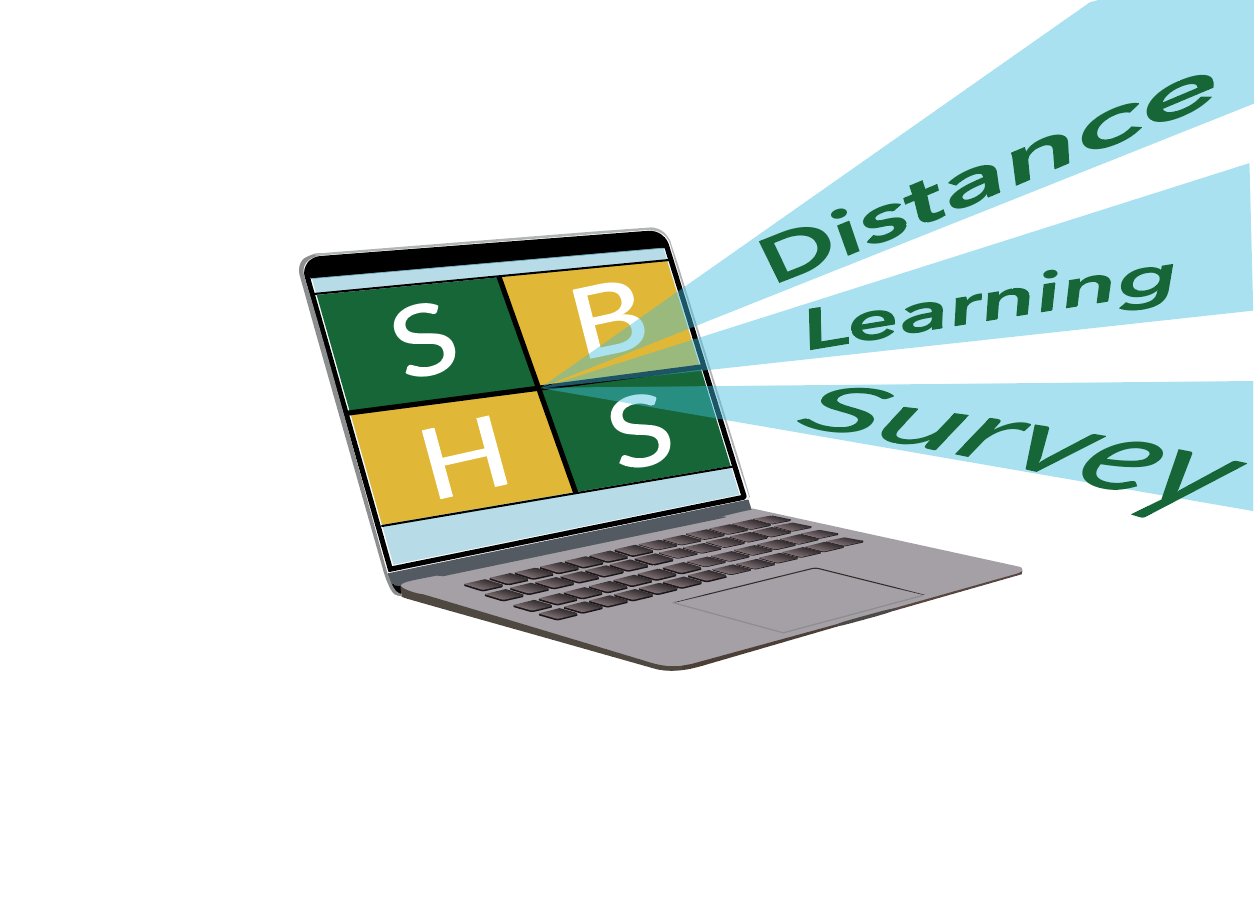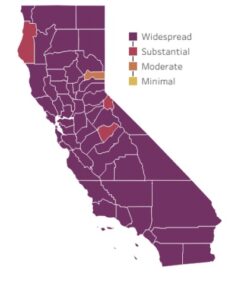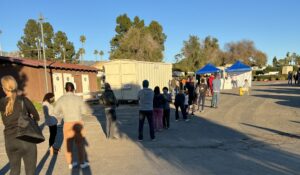Santa Barbara High school is back in session, with quite a different look; halls that were once bustling with students are empty with the online platform ”Zoom” replacing crowded classrooms. But just how effective is distance learning, and what does the SBHS student body think of online school? To find out the general opinion on distance learning, you’d have to ask the students. So, I interviewed individuals about their online schooling experience and sent out a survey to the entire student body of SBHS. The survey response was overwhelming, revealing students’ opinions, issues, and dislikes about our new schooling system.
On Friday, July 17th California Governor Gavin Newsom announced that all schools in counties with a test positivity rate above 8% must impose 100% online learning, effectively making the proposed half online half in-person school structure for Santa Barbara High obsolete. It’s now Wednesday, September 30th, and Students have undergone the first quarter of online schooling. This online schooling was put into practice as of July 17th when the county’s infection rate was 9.7%, which is 1.7% higher than what the infection rate must be under to start in-person classes. So to the disdain of many students, their high school experience was moved online.
While it underwent a transformation to online school, Santa Barbara high school also transformed its scheduling system. The once six class a day and two-semester schedule was changed to what DP and SM’s schedules have looked like for years. There are currently four classes a day, and four quarters, with two completed quarters counting as a year of credit. Students have only positive responses to this news, as 21.1% of students that took the survey stated that this opportunity to get more credits was a highlight of online school. School now starts an hour and fifteen minutes later, and no longer having to get up early is a favorite part of online school for 32.9% of students. This late start was appreciated by many, including Junior, Kassandra Garcia Serrano, who stated, “I like that we have longer lunch breaks and that classes get to start later than usual.” While distance learning does offer many positive benefits, most students prefer in-person school. Only 22.4% of students like online learning more than regular school, but fortunately, 67.1%, despite preferring traditional school, are happy with how online school is being run. Many other students, such as Aryana Mahboob, agree that “teachers are doing a great job considering the circumstances.” I doubt that this new normal of living at home in a pandemic will ever be a circumstance students can get used to. Still, I agree that the SBHS community and administration are doing an excellent job of moving forward and adapting to online school.
Unfortunately, many students have issues with distance learning, as it can be unengaging and less interactive than traditional classes once were. The online format has little room for engagement, as students interact less with teachers and each other. It’s difficult going from seeing friends in the halls, talking with peers, and completing interactive projects to sitting by a screen all day long and working on your computer. When asked what their least favorite part of online school was, 15.8% cited classes not being engaging as their main dislike. This already extensive amount of screentime is increased as teachers tend to assign more homework to make up for less instructional time allotted with the block schedule, adding an average of 2 ½ more hours spent working. This increased homework time is seen through a survey statement provided by an anonymous student who states that “after a school day from 9:15 – 3:15 I have loads of homework that takes me another couple of hours.” One student also mentioned that they disliked that online school has “way too much homework,” and another disliked “staring at a screen for countless hours a day.”
Distance learning is meant to distance students from the thousands who attend SBHS to decrease the chance of COVID infections. Yet, this physical distance implements social distances, which negatively impacts students’ mental well being—over 73.7% of students are struggling with distractions and time management. The environment school is taken in is imperative for students’ focus. People have a more challenging time focusing at home than in a library or school. After all, to succeed in an online school, you have to be more proactive in staying on top of deadlines, reaching out to teachers, and working independently. School provides structure for many, allotted worktimes and deadlines function to keep students on track, but when you’re online, it’s up to students to stay on topic and create their own work times. If you lack time management skills or tend to procrastinate, online school can be challenging
So what can students do to improve their online school experience and the mental toll that distance learning has on them? According to Purdue University, for students to stay focused on their studies, they should: identify time-wasters like social media or texting and avoid them, focus on one task at a time, and compartmentalize the tasks that need to be done. I would also suggest keeping a planner to stay organized, make weekly plans, and most importantly, practice self-care. Teachers understand that due to the new scheduling system, the increased amount of course work can be overwhelming at times. If you ever have trouble or need an extension on an assignment, it never hurts to email your teacher and let them know what is going on. These are challenging times that the world and our school is persevering through, but I am confident that the SBHS community will emerge even stronger than before.
Sources:
Bai,Nina.“How to Reopen Schools Safely During COVID-19, According to Pediatricians.” How to Reopen Schools Safely During COVID-19, According to Pediatricians | UC San Francisco, UCSF, 24 Aug. 2020, www.ucsf.edu/news/2020/08/418281/how-reopen-schools-safely-during-covid-19-according-pediatricians.








I think that you would get the same response and results if you ask the question on a survey either prior pandemic and after the pandemic.
What percentage of students are having trouble learning in the classroom? 79%.
This article says “infection rate” where it should say “test positivity rate.” They are completely different things. And, the reopening criteria is not just based on test positivity. See https://covid19.ca.gov/safer-economy/ for details.
DPHS has had the same schedule as SBHS for years. In fact, SBHS copied the Wed+Thurs seminar schedule from DPHS, which had it for a year prior. Only San Marcos used the 4 classes per 1/2 year prior to this year.
Thank you for the clarification. The article has been updated to reflect this.